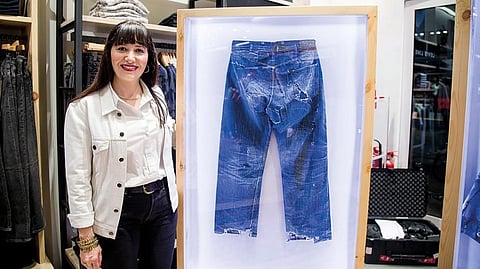Inside my job: The corporate historian
More than ever, brands want to showcase how authentic they are. Enter Tracey Panek

Historian Tracey Panek is director of archives, at Levi Strauss & Co. She reveals what it takes to preserve a brand’s history – and why it needs to be done in the first place.
What is the role of a corporate historian?
A corporate historian researches about the company’s history, documents and archives it. We also have to answer historical questions and assist employees to understand the brand’s evolution.
How did you get interested in history, particularly corporate history?
From my childhood, I loved listening to stories. We are four siblings and at the dinner table there would be many stories. My parents migrated from New Zealand to the US and we especially enjoyed listening about their childhood and growing up years. That love for uncovering the past became a life-long passion. I graduated in history in 1995 from the University of California, Berkeley and I did my masters in history from California State University. I also did an internship at California State Archives where I got an insight into studying business history. My first job was in a communications company before doing a stint in the automobile sector.
Tell us how you started with Levi Strauss?
I knew the former historian of Levi’s, Lynn Downey, who was moving on to another project. I grabbed the opportunity and applied for the post. I joined the company in June 2014.
Your work profile at Levi’s involves…
Overseeing acquisitions and preservation of historical Levi’s garments, photographs, documents, posters and many other materials that we carefully preserve in our company archives. I work closely with the Levi’s design team to help use our rich heritage as inspiration for future designs. I also read, research and visit museums and exhibitions to search interesting and iconic items to be included in our archives. A lot of my experiences related to my work are shared on our official blog Unzipped.
Give us a peek into the preservation process.
The preservation of a garment is a meticulous process that varies depending on the condition of the garment. I work with a conservator. We clean the fabric first with just plain water and stored it in muslin cloth. We always use white gloves while handling them. The entire restoration and archiving process is photographed and curated digitally.
Why is it important to archive a brand?
The authenticity of a product is very important and that can be established when we refer to a brand’s history and understand how their products evolved over the years. At Levi’s, for instance, we can establish the year of manufacture of a jeans through typical buttons used in an era, the number of pockets or labels. Each small detail is archived and that eventually helps future generations. One of the oldest Spur Bites called the Cowboy jeans that we displayed at the launch of the Dubai mall store re-opening dates back to 1890. We can arrive at that manufacturing date looking at the single back pocket and the writing on the label inside the front pocket.
From telecommunications to automobiles and now garments how did your job change as a corporate historian?
The practice of studying history does not change, it’s only the products that have changed. I’ve spent the last 20 years researching and studying various themes in the San Francisco area.
What do you like the most about your job?
Besides the fact that I get to combine my passion for history at my workplace what I really cherish about being a historian are the people’s stories I get to hear. As part of my work I interact with several Levi’s fans who have unique stories which have shaped the way they wore their jeans. The patch work Levi’s jeans donated to our archive by illustrator Doug Hansen is an expression of his creative skills and embodies the Hippie spirit of the Summer of Love, 1967. Doug had purchased a 501 jeans, which started tearing at the knees at first. Doug would cut bits and pieces of fabric from his girlfriend’s dresses, sometimes from his grandma’s silk ties and patch up the jeans.
Over the years as the colorful patches on the jeans increased they became a pair of brightly coloured patchwork jeans with great personal meaning. We invited Doug’s family to our archive and over time as we developed a friendly relationship, it led to Doug’s decision to donate the pants to our archives. Another interesting story is of the prisoner pants. An inmate from Northern California jail sketched images on a pair of white Levis completely transforming them into a work of art.
Your most memorable moment at Levi’s?
Last year, when we were able to acquire the brown Levi’s Cossack leather jacket worn by Albert Einstein at a Christie’s auction. It still has the smell of the pipe he used to smoke. I made the final bid and make it part of our archive.
What challenges do you face at work?
Most of Levi’s early company records were lost in the San Francisco fire and earthquake of 1906. It is challenging to piece together information of that era. We also have to preserve the garments carefully from moth invasion.
Sign up for the Daily Briefing
Get the latest news and updates straight to your inbox



